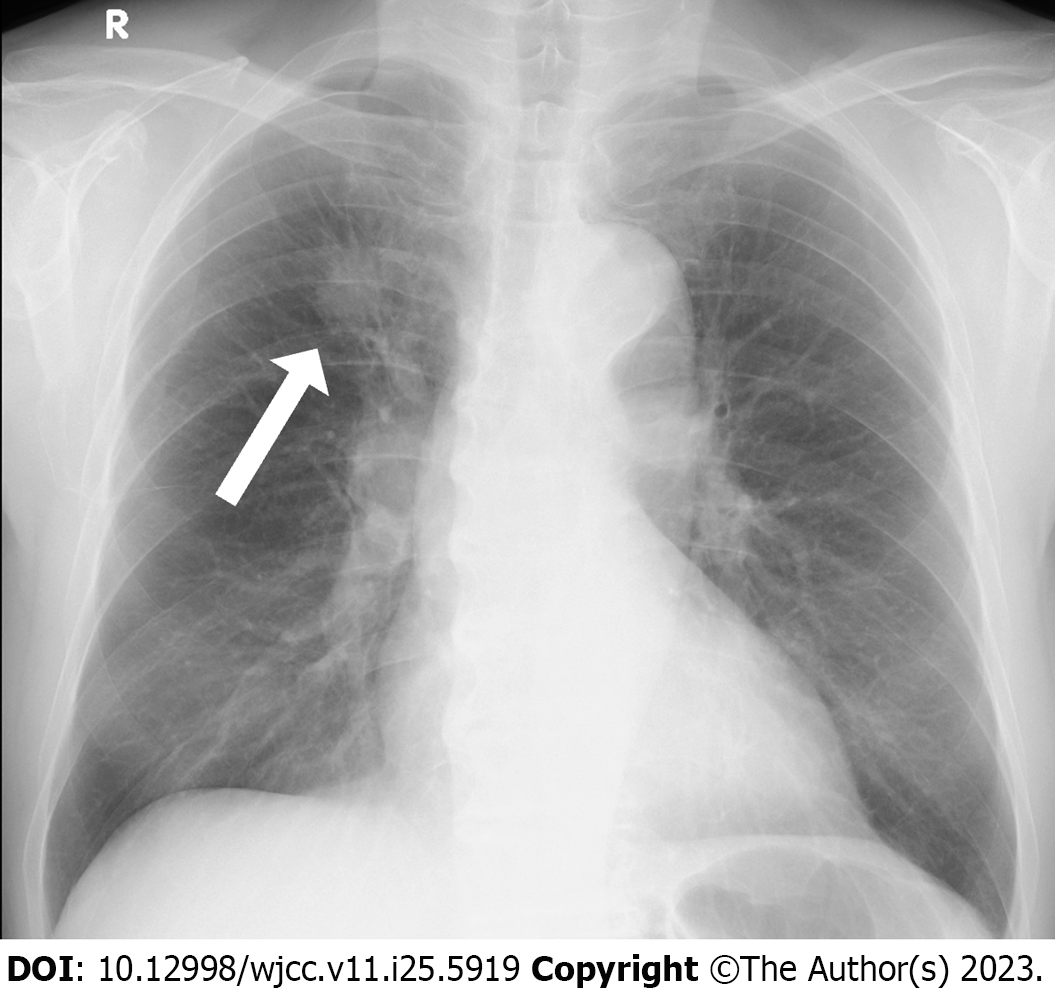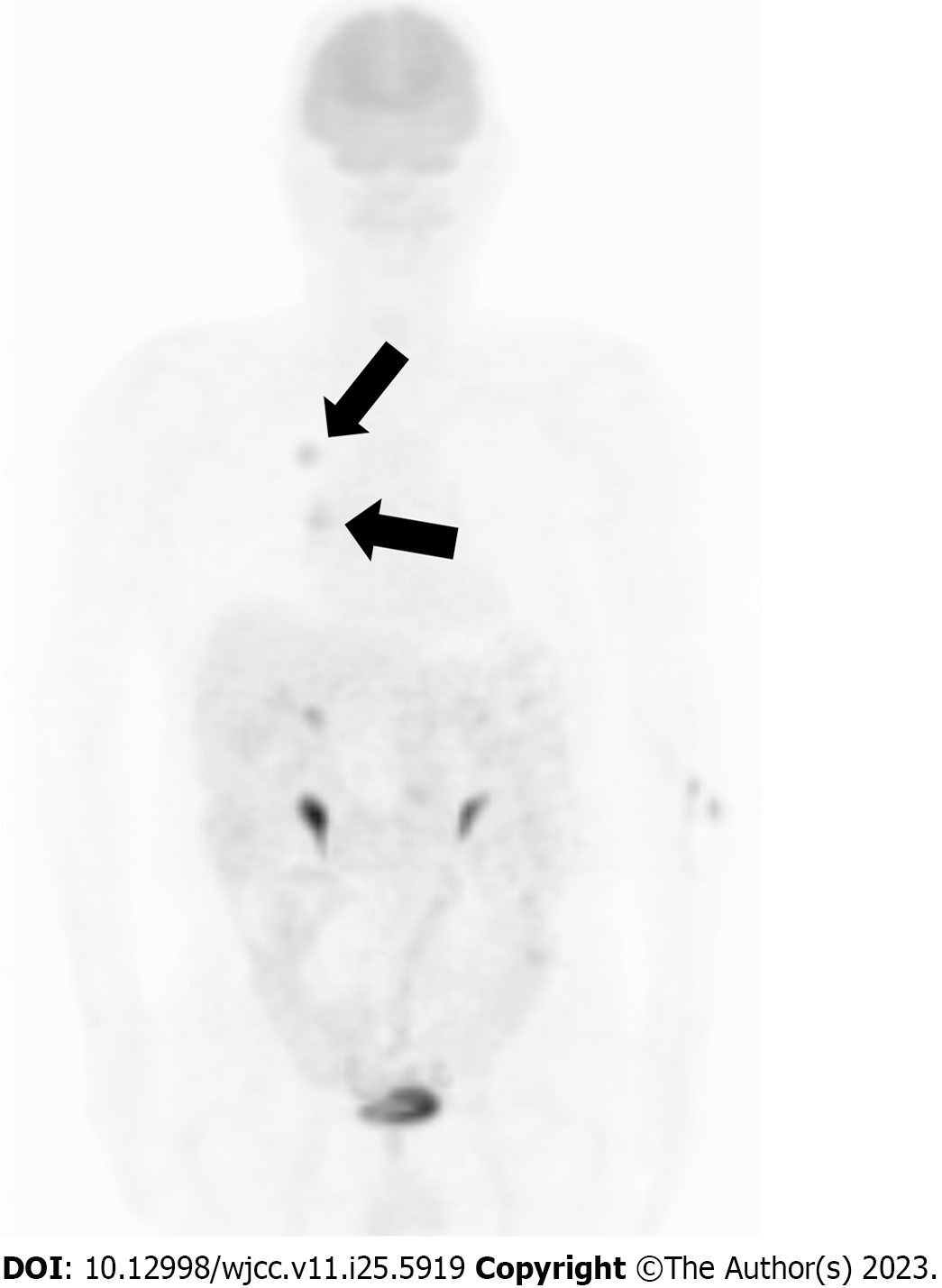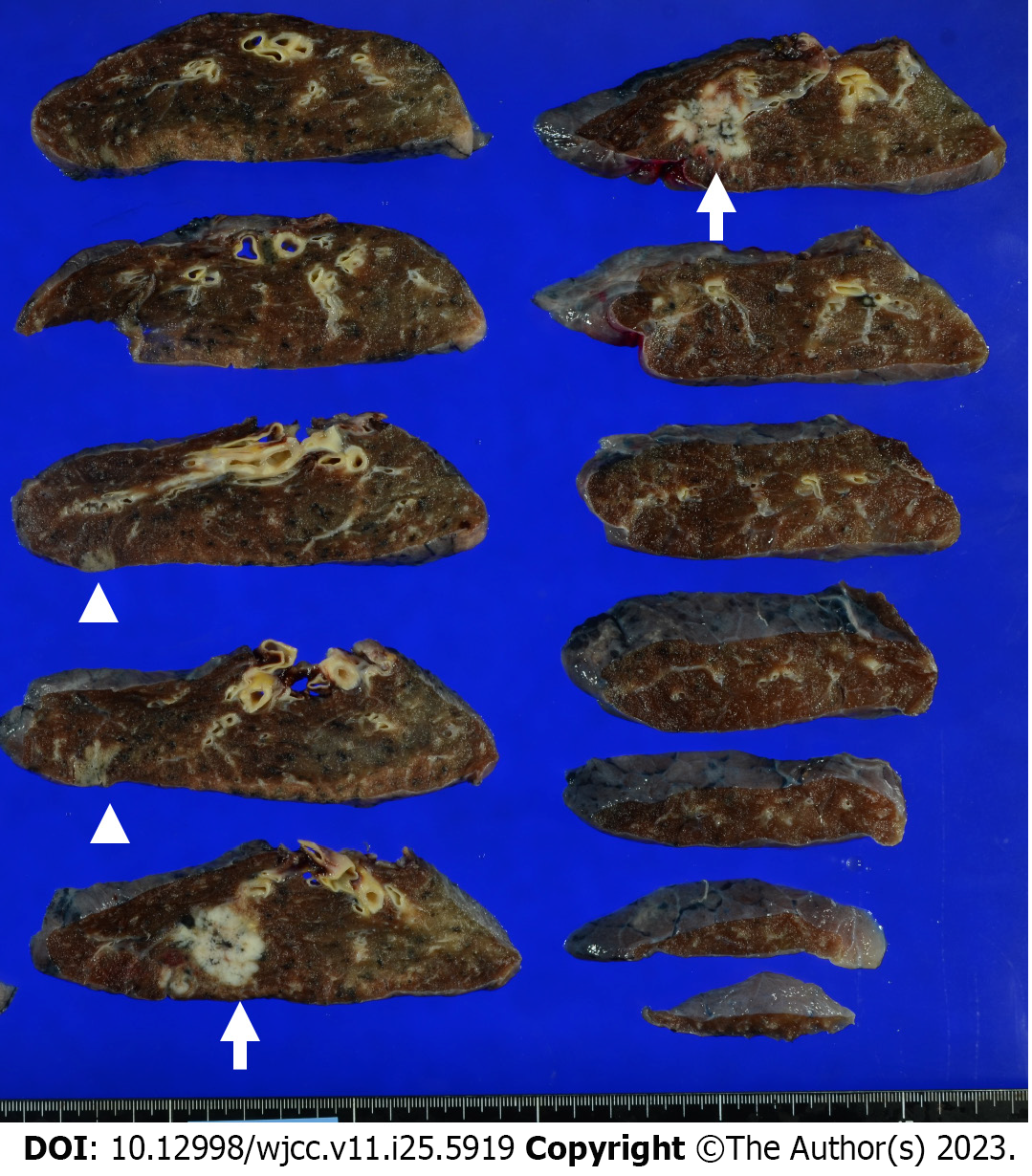Copyright
©The Author(s) 2023.
World J Clin Cases. Sep 6, 2023; 11(25): 5919-5925
Published online Sep 6, 2023. doi: 10.12998/wjcc.v11.i25.5919
Published online Sep 6, 2023. doi: 10.12998/wjcc.v11.i25.5919
Figure 1 Chest radiograph (frontal view).
Nodular shadows associated with the surrounding tightening are observed in the right upper lung field (arrow).
Figure 2 Chest computed tomography findings.
A: Chest computed tomography (CT) using the lung window showing slightly increased density in the periphery (black arrow); B: Primary lesion detected using the lung window. An irregularly shaped mass measuring 25 mm is observed in the right upper pulmonary lobe (black arrow); C: Chest CT using the mediastinal window revealing enlarged lymph nodes in the right hilar region (white arrow).
Figure 3 Fluorodeoxyglucose positron emission tomography findings.
Fluorodeoxyglucose uptake with a maximum standardized uptake value of approximately 5.0 is observed in the right upper lung field (up arrow) and right hilar region (down arrow).
Figure 4 Resected specimen findings.
In addition to the primary lesion, another lesion with a grayish-white area is noted on the cranial side (white arrows).
Figure 5 Histopathological findings.
A: Primary lesion in the right upper pulmonary lobe. The staining results indicate squamous cell carcinoma [hematoxylin-eosin (HE) staining, Scale bar: 50 μm]; B: Primary lesion in the right upper pulmonary lobe. The immunohistochemical staining results are positive for p40 (Scale bar: 20 μm); C: A lesion located on the cranial side of the primary lesion. The staining results indicate microinvasive adenocarcinoma (HE staining, Scale bar: 50 μm); D: Lobar bronchial lymph node (#12u). The staining results indicate small cell carcinoma (HE staining, Scale bar: 50 μm).
- Citation: Yoshino R, Yoshida N, Yasuda S, Ito A, Nakatsubo M, Yuzawa S, Kitada M. Synchronous multiple lung cancers with hilar lymph node metastasis of small cell carcinoma: A case report. World J Clin Cases 2023; 11(25): 5919-5925
- URL: https://www.wjgnet.com/2307-8960/full/v11/i25/5919.htm
- DOI: https://dx.doi.org/10.12998/wjcc.v11.i25.5919













